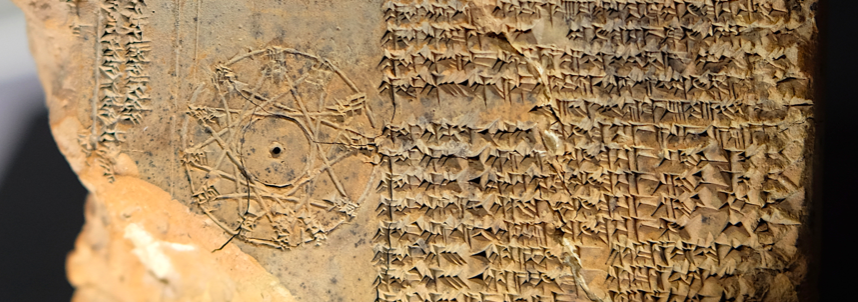
saquaijtaal@mpiwg-berlin.mpg.de
Image 1: A fragment of a cuneiform tablet from the first half of the 1st millennium BCE containing commentaries on the 5th tablet of the astrological omen series Enūma Anu Enlil (© The Metropolitan Museum of Art, New York.).
Image 2: A fragment of a cuneiform tablet from the late 1st millennium BCE containing astrological omens relating to the life of an individual as well as to state affairs (© Royal Museums of Art and History, Brussels.).
Image 3: A fragment of a cuneiform tablet from the first half of the 1st millennium BCE containing commentaries on the 5th tablet of the astrological omen series Enūma Anu Enlil (© The Metropolitan Museum of Art, New York.).
Science before Nature: An Epistemology of Perspectives in the Commentaries of Cuneiform Scholarly Traditions
Satria Quaijtaal’s project investigates commentaries belonging to scholarly traditions from first millennium BCE Mesopotamia.
The commentaries are written in the Sumero-Akkadian cuneiform script and explore the semantic landscape of literary and divinatory texts through analogical hermeneutics. Satria is interested in the principles of epistemic practices before the conception of natural philosophy and in the ontological ideas that informed them.
Cuneiform commentaries are the product of Babylonian and Assyrian scholars reflecting on older knowledge traditions and the cuneiform script as resources of knowledge. Satria seeks to uncover the commentators’ epistemic objects by analyzing the methods, questions, reasoning, and terminology that they used to engage with culturally significant literary narratives, lexical works, medical compendia, and divinatory lists of observations and predictions.
The goal of the project is to develop a deeper understanding of how the cuneiform system and hermeneutic analysis provided ancient scholars with an ontological framework and epistemic tools for investigating the experienced world through the observation and interpretation of phenomena, language, and writing.
Satria Quaijtaal holds a BA and MA in ancient Near Eastern languages and civilizations, completed at Freie Universität Berlin in 2017 and 2022. He wrote his MA thesis on “The Old Babylonian Syllabary of Akkadian Texts from Elam.”


